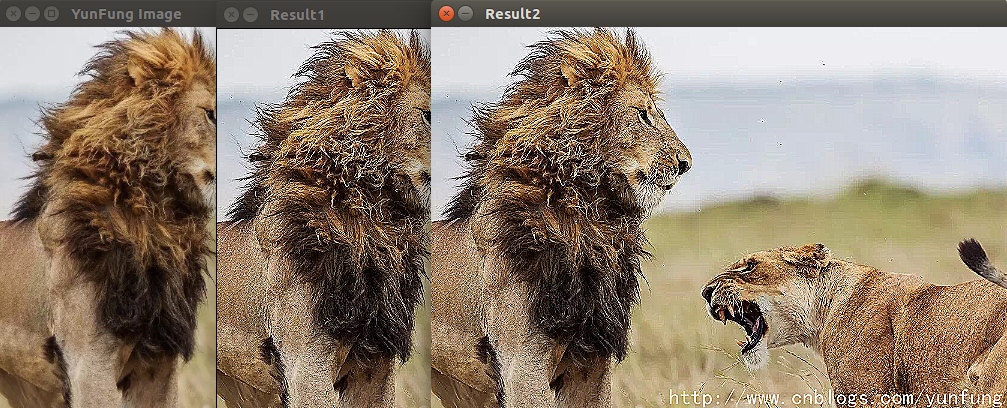OPENCV學習筆記12_掃描圖像並訪問相鄰像素
阿新 • • 發佈:2017-09-20
sca form esp amp filter 訪問 char output ()
To illustrate this recipe, we will apply a processing function that sharpens an image(銳化圖像的處理函數). This time, the processing cannot be accomplished in-place. Users need to provide an output image. The image scanning(掃描)is done using three pointers, one for the current line, one for the line above, and another one for the line below.
Since filtering is a common operation in image processing, OpenCV has defined a special function that performs this task: the cv::filter2D function. Note that it is particularly advantageous(特別有利) to use the filter2D function with a large kernel, in this case, a more efficient algorithm.
#include <opencv2/core/core.hpp> #include<opencv2/highgui/highgui.hpp> #include <opencv2/imgproc/imgproc.hpp> using namespace cv; void sharpen(const Mat &image, Mat &result) ; void sharpen2D(const Mat &image, Mat &result); int main() { Mat image = imread("test.jpg"); resize(image, image, Size(), 0.6, 0.6); Mat result1; Mat result2; namedWindow("YunFung Image"); imshow("YunFung Image", image); sharpen(image, result1); namedWindow("Result1"); imshow("Result1", result1); sharpen2D(image, result2); namedWindow("Result2"); imshow("Result2", result2); waitKey(); return 0; } void sharpen(const Mat &image, Mat &result) { result.create(image.size(), image.type()); // allocate if necessary int nchannels = image.channels(); for (int j = 1; j < image.rows - 1; j++) { // for all rows (except first and last) const uchar* previous = image.ptr<const uchar>(j - 1); // previous row const uchar* current = image.ptr<const uchar>(j); // current row const uchar* next = image.ptr<const uchar>(j + 1); // next row uchar* output = result.ptr<uchar>(j); // output row pointer //saturate_cast<uchar> changing negative values to 0 and values over 255 to 255 //sharpened_pixel = 5 * current - left - right - up - down; for (int i = nchannels; i < (image.cols - 1)*nchannels; i++) { *output++ = saturate_cast<uchar>(5 * current[i] - current[i - nchannels] - current[i + nchannels] - previous[i] - next[i]); } } // Set the unprocessed pixels to 0 - left - right - up - down result.row(0).setTo(Scalar(0)); result.row(result.rows - 1).setTo(Scalar(0)); result.col(0).setTo(Scalar(0)); result.col(result.cols - 1).setTo(Scalar(0)); } void sharpen2D(const Mat &image, Mat &result) { // Construct kernel (all entries initialized to 0) Mat kernel(3, 3, CV_32F, Scalar(0)); // assigns kernel values kernel.at<float>(1, 1) = 5.0; kernel.at<float>(0, 1) = -1.0; kernel.at<float>(2, 1) = -1.0; kernel.at<float>(1, 0) = -1.0; kernel.at<float>(1, 2) = -1.0; //filter the image filter2D(image, result, image.depth(), kernel); }

OPENCV學習筆記12_掃描圖像並訪問相鄰像素
